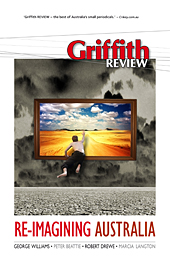THE ROAD TO the Queensland-New South Wales border turns through former dairy farms and tropical fruit plantations, many now abandoned and disappearing under a canopy of camphor laurel and regenerated rainforest: hoop pines, figs, quandongs, even young cedars press in on the narrow road. The way continues past rocky streams, home to platypus and kingfishers, through open eucalypt country and past old farmhouses and new tree-changer cement-rendered abodes. In season, fruit stalls – bananas, avocadoes, mangoes – tempt drivers negotiating sharp bends and narrow lanes to swerve to a stop and take advantage of the home-grown bargains. From Currumbin Valley, the road heads for the old logging pass of Tomewin, where a cattle grid marks the interstate boundary. A futile sign prohibiting livestock and fresh produce is the only official notification; an ageing mannequin dressed up as a fireman presides, silently beseeching drivers to throw a few coins into a rusty tin for the rural fire brigade. Were it not for the unexpected quirkiness of the whole set-up, many people I’m sure would drive straight through the boundary, not knowing that they had passed from one state into another.
Many years ago, white men with fob watches and curled moustaches defined Australia’s state boundaries on the basis of geographic features or meridial lines, underpinned, of course, by economic concerns. The everyday practices of people living in the borderlands, both Aboriginal and colonial, counted for little against bureaucratic concerns. Laying out a physical reality for the lines on maps, however, proved a difficult task for nineteenth-century surveyors, unaided by helicopters and global positioning devices. Consequently, most state borders err in practice from their legally defined trajectories. Between 1863 and 1866, two colonials – Francis Roberts of Queensland and Isaiah Rowland of New South Wales – surveyed the meandering border that divided the two colonies and which was defined nonchalantly in letters patent as ‘following the range … which divides the waters of the Tweed, Richmond, and Clarence Rivers from those of the Logan and Brisbane Rivers’. Beginning at Point Danger on the coast, they headed westward but soon had a falling out over the precision of each other’s interpretation of where the border should lie. They proceeded to chart separate courses; in the end, the records of Rowland, who mysteriously found other work to do just as the party was about to enter the roughest part of the ranges, were destroyed in a fire, so those of Roberts prevailed.

Already a subscriber? Sign in here
If you are an educator or student wishing to access content for study purposes please contact us at griffithreview@griffith.edu.au





